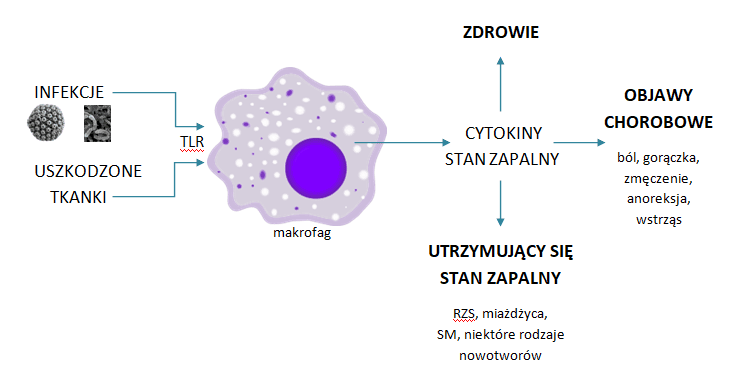 A post for the curious and for those who have wondered at least once, where does the fever come from? How does the body work in the situation of disease symptoms, what does it depend on and how does it try to fix it? I can say one thing – our body is super wise and super complicated at the same time… However, learning its mechanism is not super difficult. That is why I would like to share with you a simplified knowledge about immune processes and the role of the vagus nerve.
A post for the curious and for those who have wondered at least once, where does the fever come from? How does the body work in the situation of disease symptoms, what does it depend on and how does it try to fix it? I can say one thing – our body is super wise and super complicated at the same time… However, learning its mechanism is not super difficult. That is why I would like to share with you a simplified knowledge about immune processes and the role of the vagus nerve.

TLRs - receptors that enable cells of the immune system To distinguish foreign antigens from our own. MACROFAG - a cell involved in the body's immunity processes. CYTOKINS - produced by cells of the immune system. The higher the level of produced and persistent cytokines, the higher harm to the body.
In the diagram above I presented inflammatory mechanisms in case of health and illness. Infections in the form of viruses, bacteria or damaged tissue irritate Toll-like receptors and this already in the macrophage itself initiates immune reactions. Reactions produce cytokines and inflammation.
- If regulatory mechanisms work unscathed, we are moving towards health.
- If regulatory mechanisms fail for some reason, we experience disease symptoms.
- If regulatory mechanisms do not work, and the inflammation in our body persists, it can turn into autoimmune diseases.
QUESTION HOW IS THIS ABOUT THE ERROR NERVE?
The vagus nerve is the X cranial nerve. It accounts for almost 80% of the parasympathetic nervous system (autonomic system, i.e. a system that is not dependent on our will). The longest cranial nerve, wandering around the body, reaches many organs with innervation.
AREAS OF ORGANS CONNECTED TO THE ERROR NERVE
- throat,

- neck,
- chest,
- abdominal cavity in addition to the distal part of the large intestine and rectum.
Through the anti-inflammatory cholinergic pathway and, as a result, the release of acetylcholine, the vagus nerve inhibits ongoing inflammation in the body. Acetylcholine is the main neurotransmitter of the parasympathetic autonomic system. It stops producing pro-inflammatory cytokines. The vagus nerve has proinflammatory cytokine receptors and is therefore able to provide inflammation to the brain.
The ability to supervise and regulate the intensity of the immune response and the inflammatory process itself by the autonomic system can be compared with a knee reflex. Probably each of you knows (and if not, he will find out) that the test of the knee reflex involves hitting the patella ligament with a hammer, and under the influence of the impact the ligament is stretched. Under physiological conditions, an opposing contraction of the quadriceps muscle of the thigh occurs. The same is true with the immune response. An immediate and subconscious anti-inflammatory reaction is activated by the inflammatory stimulus. Thanks to this, inflammation does not spread to other areas of the body.

